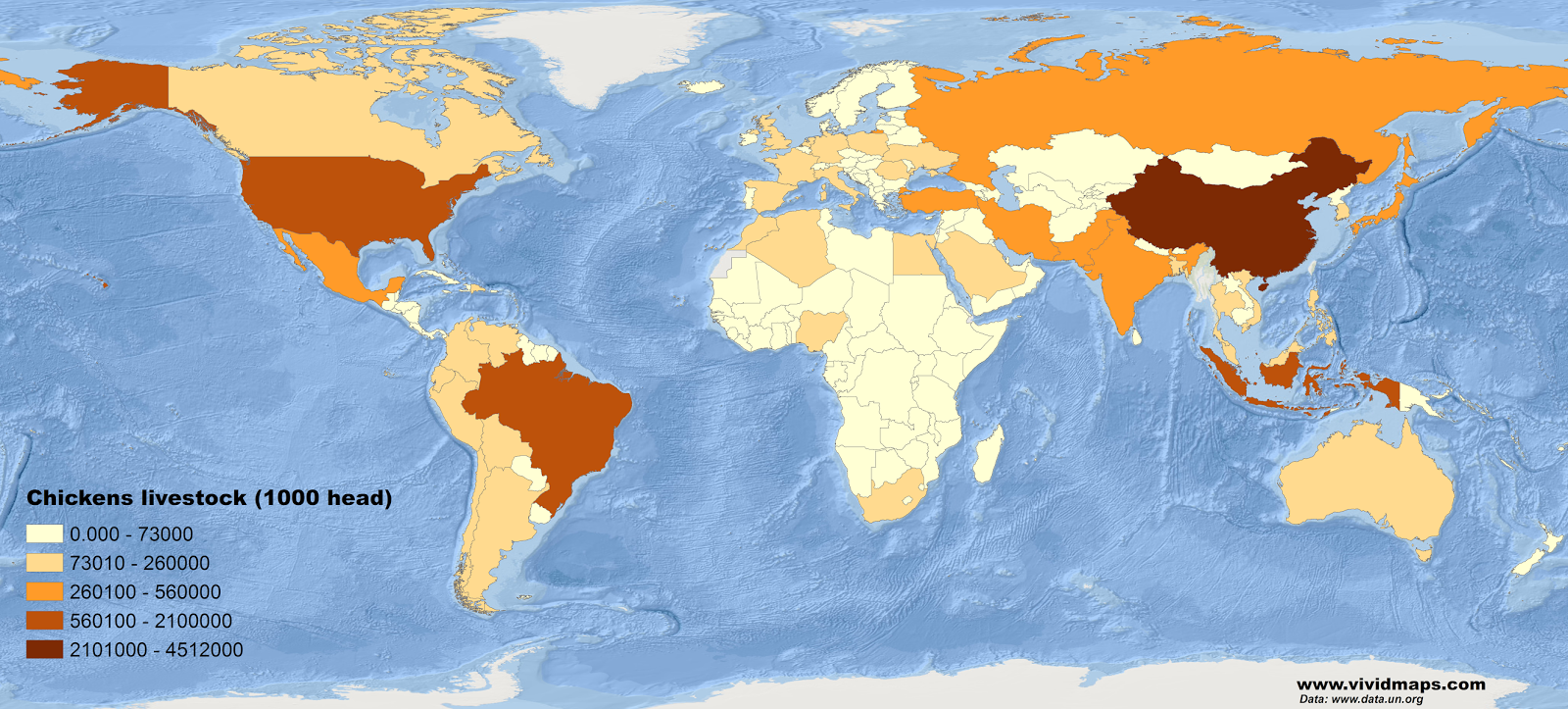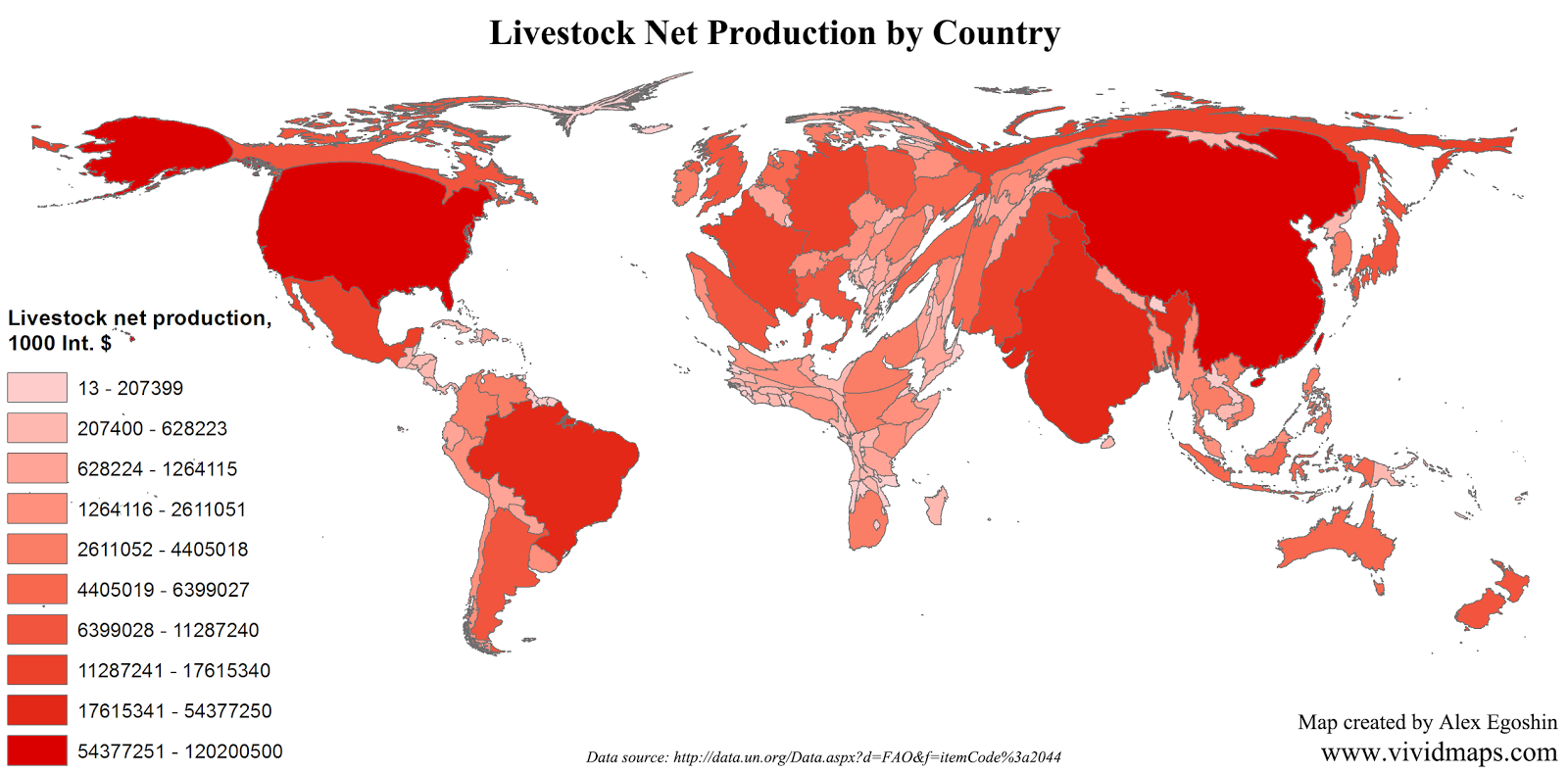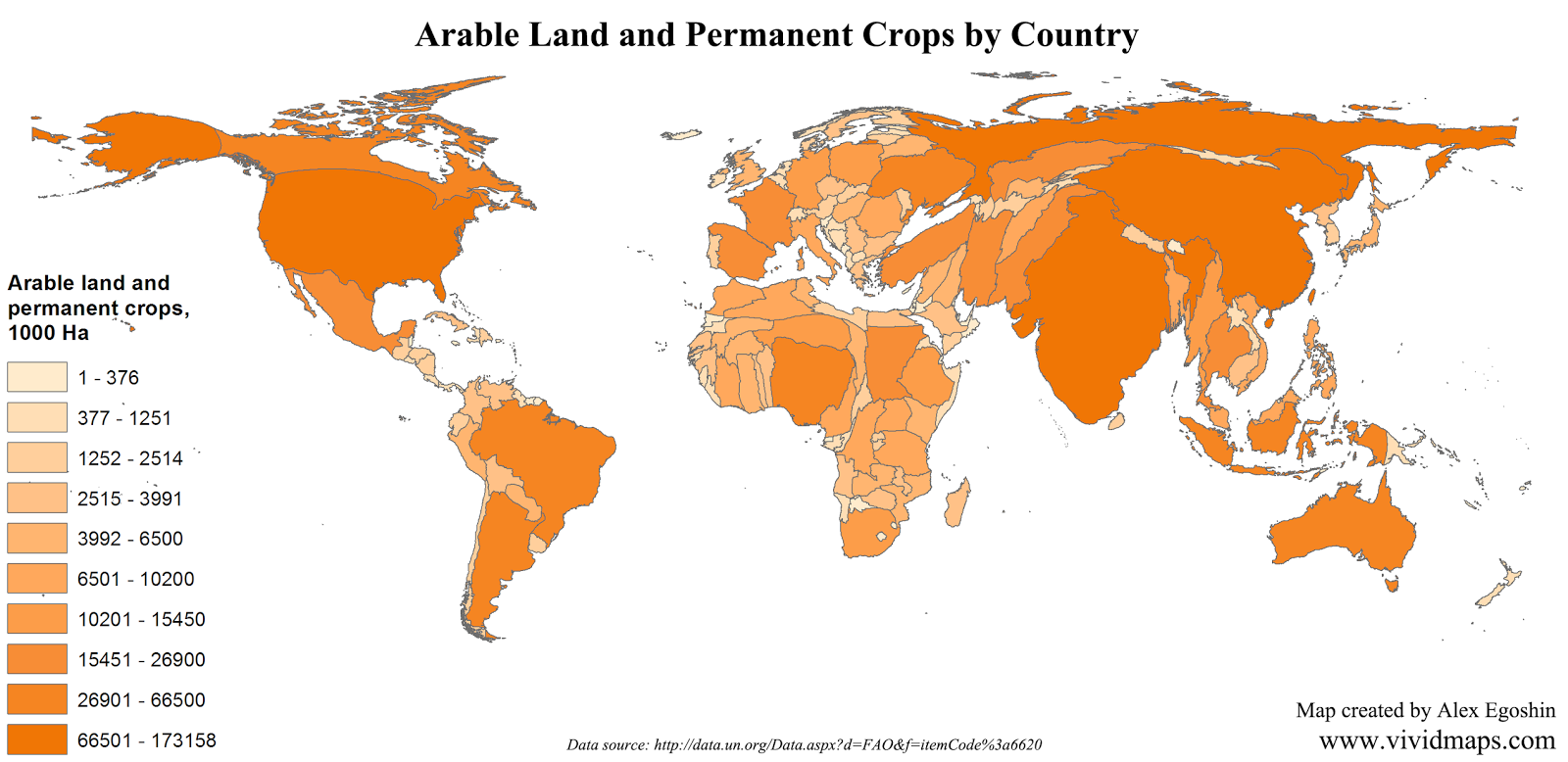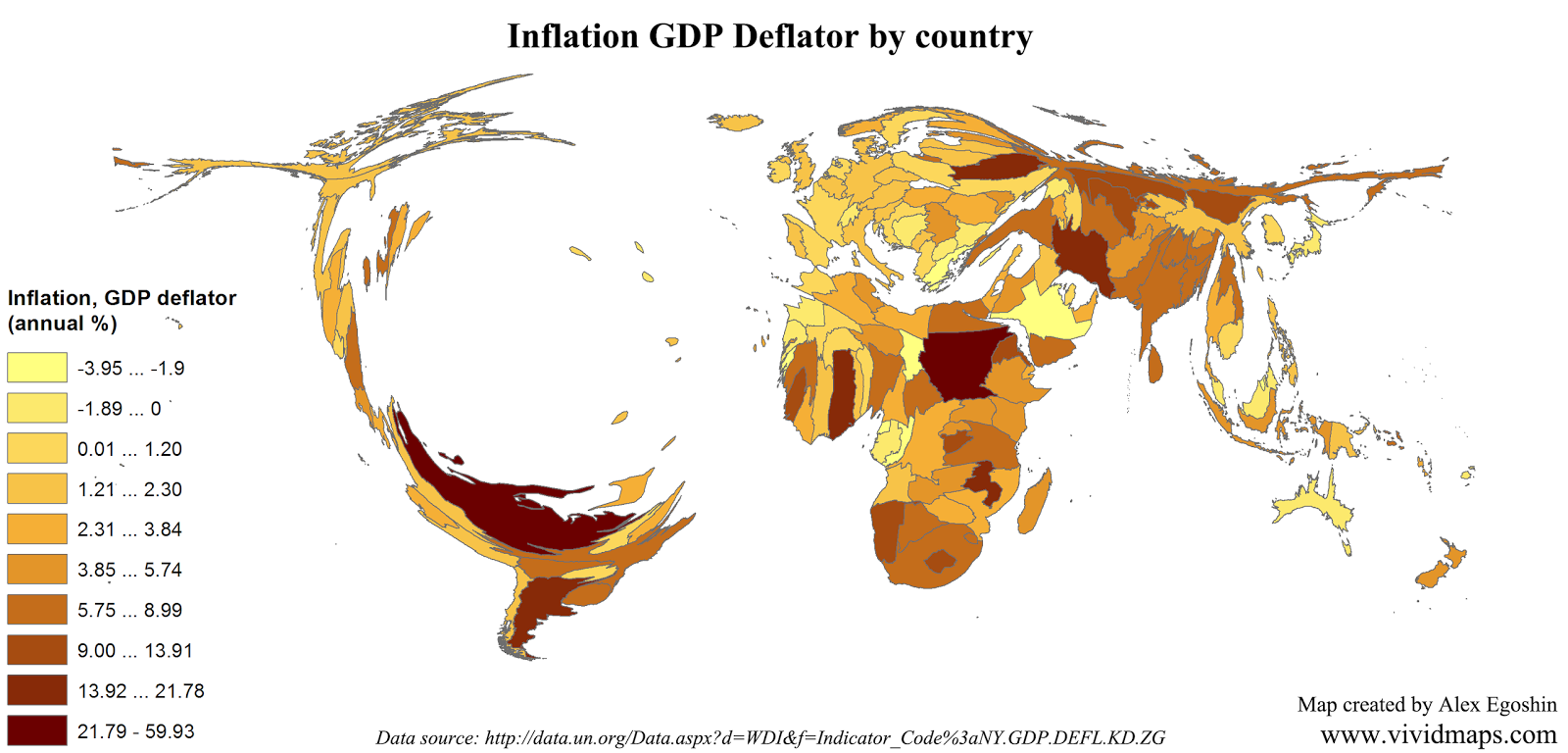Size of each language respective Wikipedia by number of articles
Have you ever wondered how knowledge is distributed across languages on the internet? Today, we’re taking a captivating look at a map that visualizes the size of Wikipedia in different languages based on the number of articles. This eye-opening illustration, created by linguisticmaps.tumblr.com, offers a unique perspective on global information sharing and linguistic diversity.
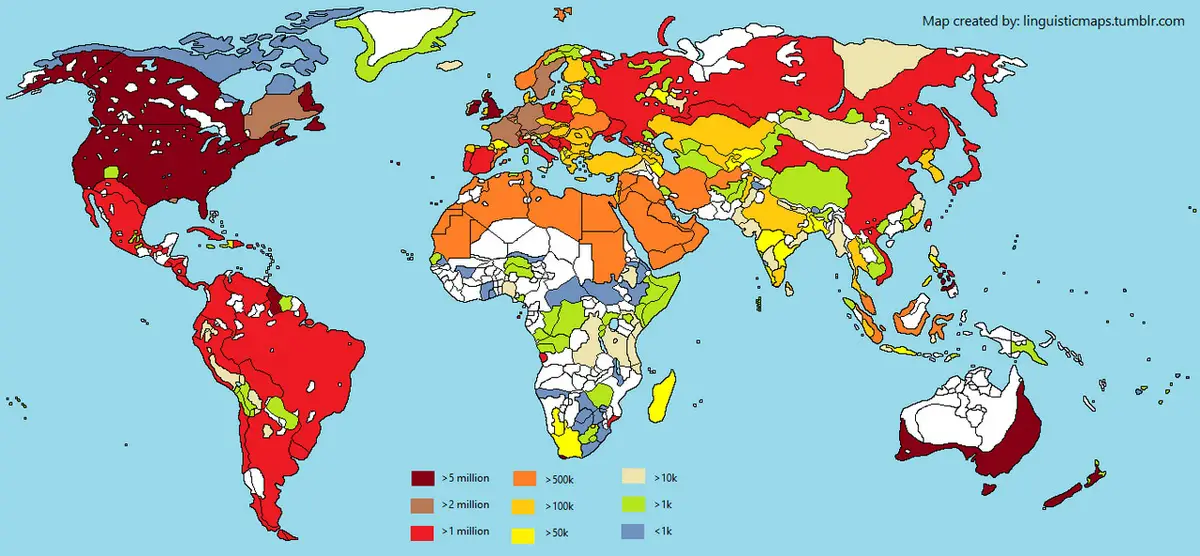
Let’s break down some fascinating insights from this map of the world:
At the top of the list, we find English and Cebuano, each boasting an impressive 5 million articles. While English’s dominance might not surprise you, the presence of Cebuano – a language spoken in the Philippines – at the same level is intriguing. This unexpected parity highlights the power of dedicated communities in building extensive knowledge bases.
Several European languages follow closely behind, with Swedish, German, French, and Dutch each hosting around 2 million articles. This content concentration reflects Wikipedia’s early adoption and sustained growth in these countries.
A diverse group of languages, including Russian, Italian, Spanish, Polish, Waray (another Philippine language), Vietnamese, Japanese, Chinese, and Portuguese, have crossed the million-article threshold. This spread across continents showcases Wikipedia’s truly global reach.
Some languages punch above their weight in terms of Wikipedia content. For instance, Waray, with relatively few native speakers, has more articles than many widely spoken languages. This phenomenon is often due to the use of bots for article creation.
500 thousand articles have Ukrainian, Persian, Serbo-Croatian, Catalan, and Arabic.
100 thousand articles: Norwegian, Finnish, Indonesian, Hungarian, Korean, Czech, Romanian, Malay, Turkish, Basque, Bulgarian, Armenian, Danish, Min Nan, Hebrew, Slovak, Minangkabau, Qazaq, Lithuanian, Estonian, Chechen, Slovenian, Belarusian, Galician, Greek, Urdu, Azerbaijani, Uzbek, Latin, Hindi, Thai, Georgian, Tamil, Welsh
50 thousand articles: Macedonian, Tajik, South Azeri, Latvian, Malagasy, Occitan, Tagalog, Tatar, Kirghiz, Asturian, Albanian, Newar, Telugu, Cantonese, Breton, Piedmontese, Bengali, Malayalam, Javanese, Luxembourgish, Haitian, Scots, Marathi, Afrikaans, Irish, Western Punjabi, Icelandic, Bashkir, Swahili, Chuvash, Frisian, Sundanese, Burmese, Lombard, Aragonese, Yoruba, Low Saxon, Nepali, Eastern Punjabi, Gujarati, Bavarian, Sicilian, Manipuri, Alemannic, Kurdish Kurmanji, Kannada, Kurdish (Sorani), Quechua, Egyptian Arabic, Mongolian, Sinhalese, Scottish Gaelic, Wallon, Neapolitan, Yiddish, Amharic, Buginese, Odia, Min Dong, Sorbian, Faroese, Mazandarani, Mingrelian, Maithili, Limburgish, Sakha, Sanskrit, Ilocano, Venetian, Ossetian, Emilian-Romagnol, Hill Mari, Wu, Sindhi, Meadow Mari
Did you know? Wikipedia supports over 300 languages, far more than shown on this map. The Wikimedia Foundation actively encourages the growth of smaller language Wikipedias to ensure global knowledge equity. Learn more about their language initiatives here.
This map not only showcases the incredible breadth of Wikipedia but also serves as a testament to the power of collaborative knowledge sharing across linguistic boundaries. It reminds us that in our interconnected world, information knows no borders.
For those interested in exploring more world maps and expanding their geographic knowledge, here are some excellent resources available on Amazon:

